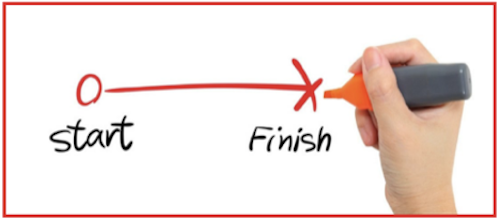“How long does it take to get from ONSET to REMISSION?”
It’s a pretty common question whether the PRP patient has been diagnosed with Adult Onset PRP or Juvenile Onset PRP. When James Shooter walked into St. Bartholomew Hospital in 1828, our disease didn’t have a name. However, I venture that he askednhisdoctor: “How long will this last.” There was no way to answer that question then…and now.
The Dowling Oration
Fast forward to March 2006 and Dr. Andrew Griffiths took a crack at duration based on 35 years as a dermatologist in London. IMHO – the problem with Griffiths’ estimates was his limited sampling size.
Adult Onset PRP
Type 1 – Classical Adult Onset PRP: Good prognosis with 80% of patients going into spontaneous remission within 3 years. After remission, relapses are uncommon
Type 2 – Atypical Adult Onset PRP: May persist for 20 years or more
Juvenile Onset PRP
Type 3 – Classical Juvenile Onset PRP: Spontaneous remission within 1 year
Type 4 – Circumscribed Juvenile Onset PRP: Long term outcome unclear but possible improvement in late teens
Type 5 – Atypical Juvenile: very persistent
Other Onset PRP
Type 6 – HIV-Associated PRP: Disease tends to be resistant to standard therapies. No further timeframe is suggested.
Fast forward to 2013 and the early stages of the PRP Global Database. It was the collection of Onset Date and Remission Date that created the opportunity to actually calculate DURATION using Onset Date and Remission Date or Onset Date and Current Status: 1,118
Onset Date and ACTIVE:
Onset Date and REMISSION
REMISSION with Remission Date
REMISSION without Remission Date
Remission affirmed, but Missing Remission Date: 252
Missing both Onset Date and Current Status: 552
Missing either
Onset Date or Current status but not both: 390
TARGET: 1,194
What is remission?
We can easily calculate duration based on three separate datapoints. But, how do we know when we are actually “in Remission” on just on the off ramp.
For example my onset date was early August 2012 and I was both symptom free and med free in early April 2014. That’s 20 months.
However, I was med free in December but had some lingering issues, e.g., hair and fingernails. My duration could be as short as 16 months.
The real problem is in developing accurate metrics. It’s all about comparing apples and oranges. We need a universal definition of Remission – either apples OR oranges.
As of April 29, 2019, the PRP Global Database maintained 2,837 patient profiles of which 524 list REMISSION as the current status. Unfortunately, only 252 include a REMISSION DATE.
Editor’s Note: The long-term prognosis for PRP is not set in stone. There are some guidelines that dermatologists feel comfortable in treating as Gospel.
Suffice it to say that there has been insufficient research to be able to predict when Type 1, 3 and 5 will “run it’s course.”
Editor’s Note:
It is generally accepted that 90 percent of all patients diagnosed with pityriasis rubra pilaris will achieve remission. Unfortunately, there is no universally accepted definition of remission. For purposes of discussion, we will define remission as “symptom-free and med-free”.
There has been no research regarding PRP and remission. The PRP community must reach out to PRP patients who are in remission and document that part of the PRP journey.
❏½ Are you “active” or “in remission”?
❏½ What is your definition of remission?
❏½ What was the duration of your PRP journey – from onset to a declaration of remission.
❏½ How long have you been “in remission”?
❏½ Are there still remnants of PRP, e.g., scars?
❏½ Have you suffered any relapses or flares while “in remission”?
❏½ What pre-onset aspects of you have NOT returned to pre-onset you?
When you have information to share about your experience with REMISSION, please forward those “sharings” in an email to editor@prpSurvivalGuide.org.

